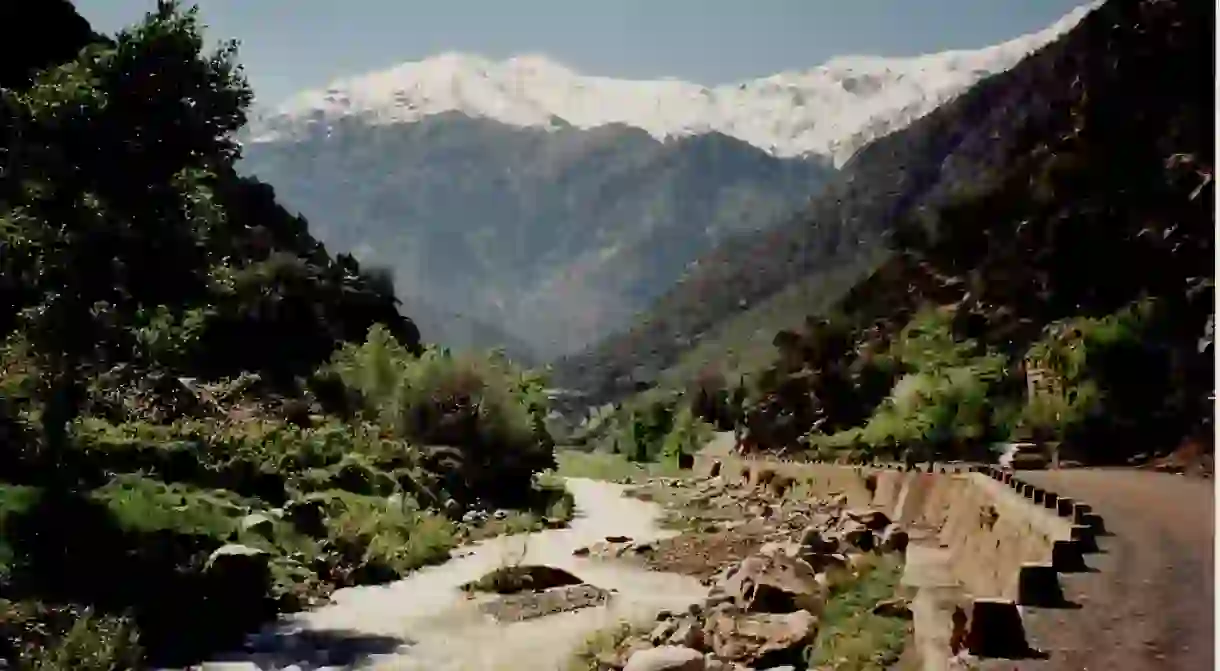How to Spend Two Days in Ourika Valley

Ourika Valley is a popular day-trip destination from Morocco’s tourist magnet of Marrakech. It sits at the foothills of the mighty Atlas Mountains, and with slightly cooler temperatures and a much more laid-back atmosphere than the frenetic Red City, here is how to linger in the mountains for a little longer and spend two days in the lush Ourika Valley.
Day One
On your first day in Ourika Valley, focus on uncovering some of the area’s rich history and culture and seeing how locals live.
Morning
The morning’s destination is Aghmat, an ancient city just outside Ourika Valley. The old Berber settlement was the region’s capital in the ninth century. It grew and thrived for many years, only going into decline after the capital was moved to Marrakech in the 1070s. It continued to be a place of exile, however, and also had a significant Jewish population. Today’s visitors can wander around the archaeological remains, imagining what the city must have been like in the past. In most places, only the foundations still stand, but the ruins remain atmospheric.
Visitors can see the remains of private dwellings and the public hammam, irrigation channels, and sections of the old city walls. Another interesting feature in Aghmat is the Mausoleum of Al-Mutamid, a former Andalusian king who was sent to Aghmat in exile. His resting place was given a makeover in the 1970s complete with a modern tomb topped with an Almoravid-style cupola. The surrounding gardens are pleasant. After that, head towards the main centre of Ourika in time for lunch.

Afternoon
Enjoy lunch at La Safraniere de l’Ourika, a pretty saffron garden with a top-notch restaurant. Tour the gardens, visit the small museum, and admire the countryside vistas before dining. Dishes make use of the locally grown saffron spice and other homegrown herbs and spices for diners to fully appreciate the delicate balance of flavours. Next, go to nearby Le Jardin Bio Aromatique de l’Ourika. The botanic garden is filled with herbs and other plants used in traditional-natural remedies. Fragrant smells waft through the air, so relax in the shade of a Berber tent with a glass of mint tea or herbal tea. Alternatively, soak feet in a soothing foot bath or enjoy a massage to further relax.
By mid-afternoon, go to Tafza village for a glimpse of Berber life. The Ecomusee Berbere, housed within the former home of the village chief, contains numerous household objects, artifacts, and decorative objects. The mud-brick house is split over three levels, and it’s definitely a highlight of a visit to Tafza. Pop into an argan-oil collective, see local women hard at work peeling the fruit, and learn how they produce the sought-after oil—and maybe even learn more about tree-climbing goats.
Le Jardin Bio Aromatique de L’Ourika, Tnine Ourika, Morocco, +212 5244-82149
Ecomusèe Berbère De L’ourika, Ourika, Morocco, +212 610-256734

Evening
As the afternoon draws to a close, take a leisurely stroll around the Berber village as kids play outside their homes and women start to prepare the evening meal. Time to head towards accommodations for a relaxing evening in preparation for the following day. Jad Auberge is a good budget-friendly option in Ourika, and it offers an indoor pool, on-site restaurant, a sun terrace, and two TV lounges. Kasbah Omar is another top choice. It has traditional designs and accessories throughout its spacious rooms that help transport guests to a magical, exotic land. There’s a restaurant that serves traditional Moroccan fare, and guests can enjoy splendid views across the valley.
Jad Auberge, Douar Akhlij-tnine Ourika, Ourika, Morocco, +212 661-601737
Kasbah Omar, Ourika Road, Anrar Village, Ourika, Morocco, +212 5244-82026

Day Two
Enjoy a filling Moroccan breakfast before setting out for action-packed adventures of hiking a multi-level waterfall and wandering through the countryside. There will be plenty of opportunities to observe local life too.
Morning
Stop first in Setti Fatma. Originally a Berber settlement, it now primarily caters to tourists. This is also the entry point for the Setti Fatma Falls, a multi-level waterfall that can be climbed. Start early to beat the hottest temperatures of the day and be sure to carry a bottle of water. While the route is easy to follow, some parts can be quite challenging—especially when it involves scrambling up and over slick rocks, so wear sensible shoes. Each level offers different views, and the overhanging trees provide plenty of shaded nooks to sit and relax amid the sounds of tinkling water, excitable chatter, twittering birds, and clacking insects.

Afternoon
There are many restaurants and cafés along the river in Setti Fatma, ideal for a spot of lunch or a refreshing drink after hiking. Indeed, some of the tables and chairs sit directly in the shallows for patrons to soak their feet in the chilly gushing waters. Cross rickety-rope bridges, pick the perfect spot and dig into a tagine, flavourful fresh salad or brochette as the flowing waters soothe feet and souls alike.
Adventure-loving travellers could spend the afternoon rafting or kayaking along the river. Alternatively, set off on a gentle hike through the countryside, admire the lush greenery of the valley and the quaint Berber villages that speckle the landscapes.

Evening
Return to Setti Fatma in the evening for another riverside meal. Café/restaurant Azrrabzou is especially charming and nestled among almond trees. Timichi and the Hotel Restaurant Azilal also offer great choices for an authentic home-cooked meal. While no match for the buzzing souks of Marrakech, the small stores filled with artwork, handicrafts, and souvenirs in Setti Fatma are worth a quick browse. Several hotels and guest houses offer accommodations for those planning to spend a second night in the verdant Ourika Valley before setting off for the next destination.
Hotel Restaurant Azilal, Setti-Fatma, Morocco, +212 613-038096














